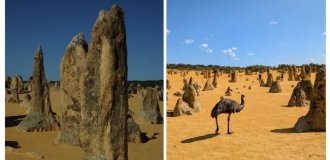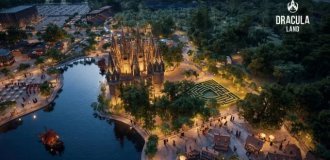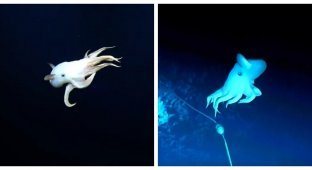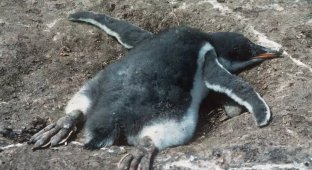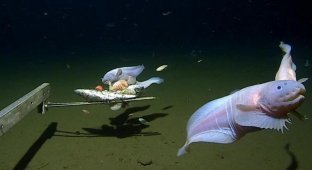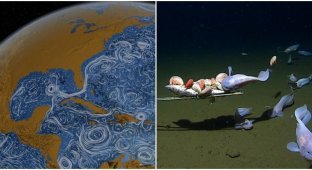Goosebumps: a detailed description of all levels of the ocean (14 photos)
Does everyone know that scientists have studied the world’s oceans worse than space? And there's a good reason for this! The fact is that water spaces change not only in width and longitude, but also in depth. Depending on the distance from the surface, sea creatures take on unearthly, alien forms. 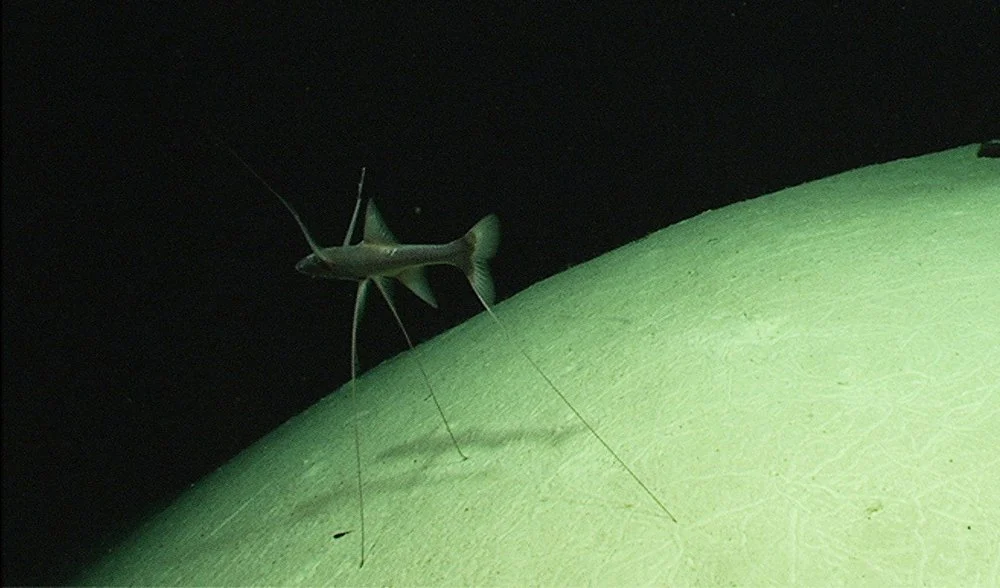
It is so difficult to swim at the bottom of the ocean that even fish stand there.
Level 1: Neuston
The first level of the ocean is neuston. It is located just a meter from the surface. Neuston is the kingdom of microorganisms. This is an excellent place for photosynthesis, which means dozens of species of algae feed millions of species of shrimp, crustaceans, amphipods, fish larvae and crayfish. Giants here are considered to be animals a couple of centimeters in size. 
Just a small part of the diversity of plankton.
There are few giants in the microcosm, but what they lack in numbers they make up for in strangeness. Here you can find sea water striders jumping on the surface, snails crawling along the underside, slugs that look like alien ships, and Portuguese man-of-war - colonial animals that invented sailing before they invented limbs and brains. 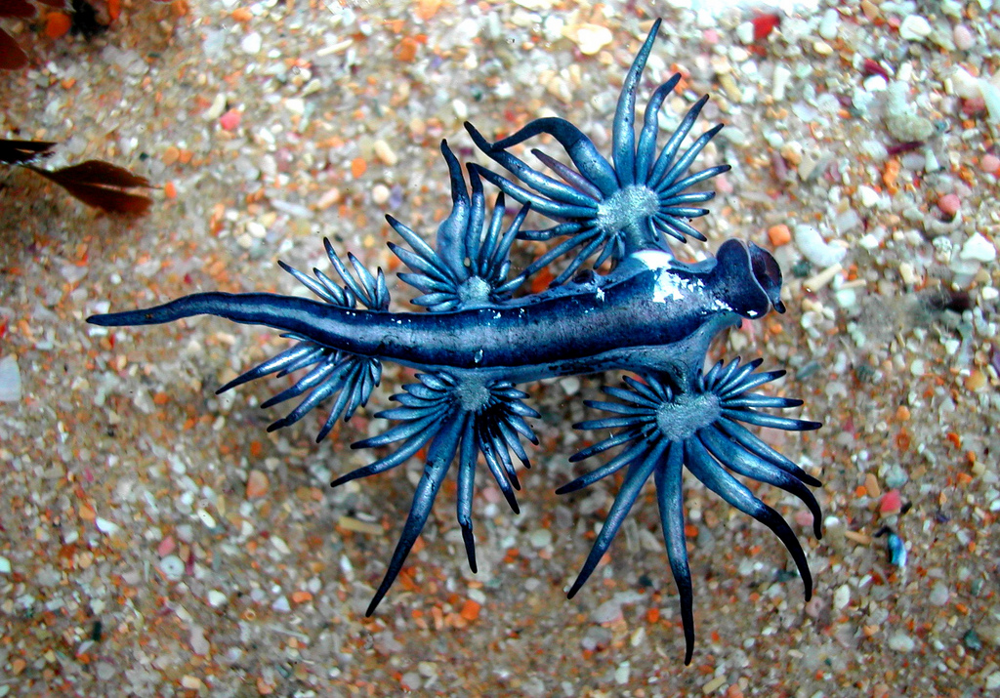
The blue dragon is an inhabitant of the neuston. I don't recommend touching it, it's poisonous.
Level 2: Photic Zone
The second layer of the ocean is the photic zone. Its depth is no more than 200 meters, but it is here that 90% of the ocean’s biomass lives. Almost all fish and sea animals live here. Squid, sharks, whales and dolphins and sea turtles are just part of the region's enormous diversity. 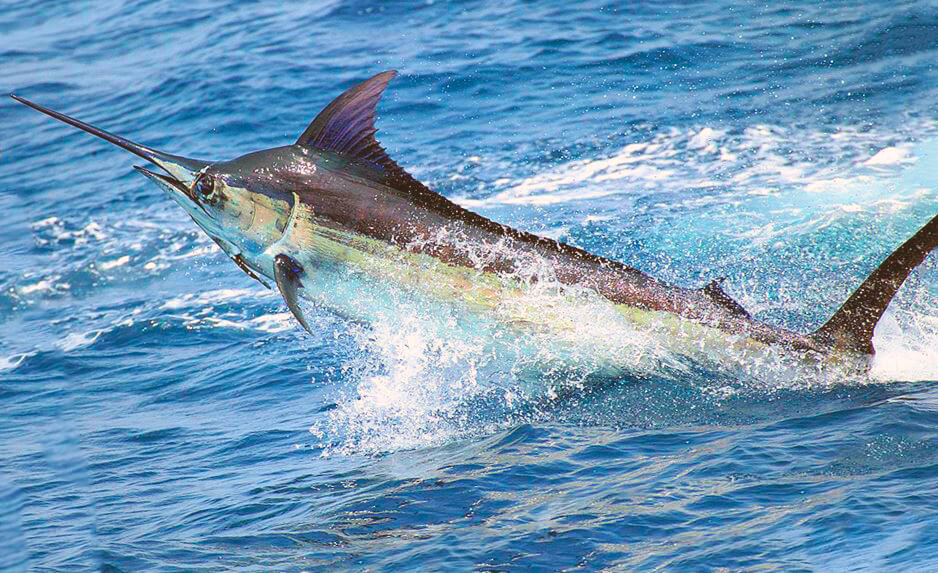
Blue marlin, one of the fastest fish on the planet, sends its greetings straight from the photic zone!
The key feature of the photic region is constant vertical migrations. During the day, the inhabitants descend lower, and at night they rise to the surface. In their place are invaders from the darker depths of the ocean - from the twilight zone. 
The size of the photic zone strongly depends on the turbidity of the water. In some regions it is only 50-60 meters.
Level 3: Twilight Zone
Twilight, also known as the mesopelagic zone. This is where it feels like the deeper you go, the closer you get to hell. The inhabitants of this place exist solely at the expense of the resources that the first two ecosystems created. There is still light here, but it is not enough for successful photosynthesis, so the local plankton is busy processing the remains. But life is not easy even for him - the conditions are too unstable. In the mesopelagic zone, major ocean currents collide and mix, causing temperature, salinity, and oxygen saturation to fluctuate greatly throughout the year. 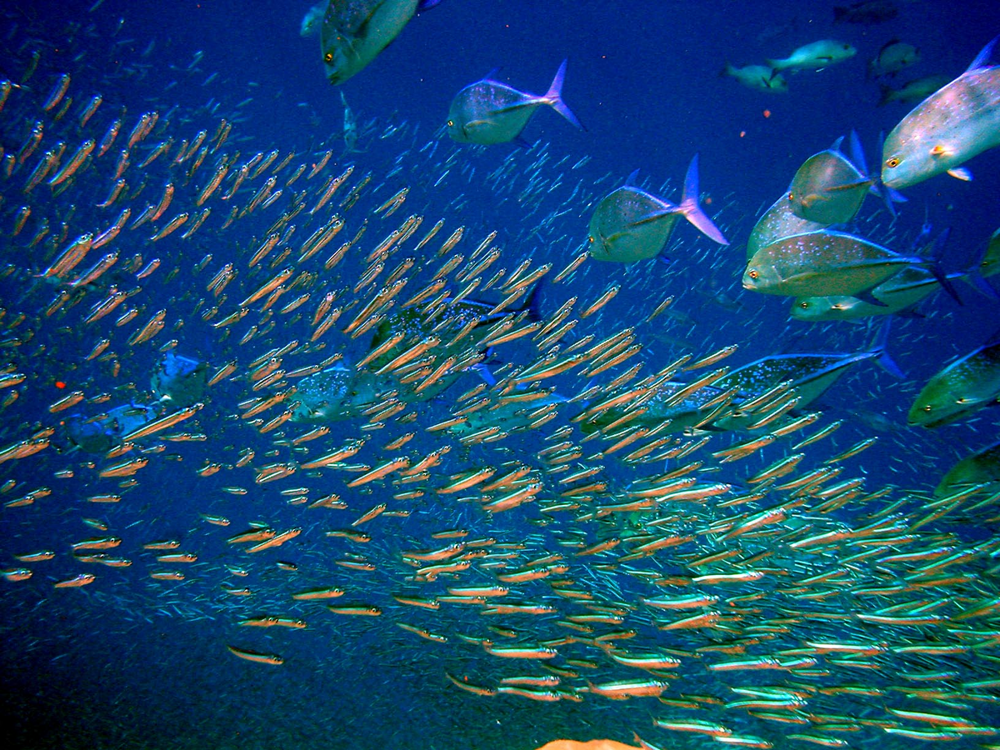
Fish diversity at its best!
Since there is less food here, the diversity of large animals is lower. And yet, at depths from 200 to 1000 meters, there are from 2 to 10 billion tons of fish. Most species, however, are touring tourists; they rise higher to the surface for food. The rest are represented mainly by ambush predators: giant squids, anglerfish and hatchetfish. 
Why are your eyes wide open like that? This is a hatchet fish - a typical inhabitant of the twilight zone.
But 90% of all deep-sea fish are represented by just one family - myctophids, or luminous anchovies. Their schools are so large that the fish confuse research sonars. Clusters of fish have been mistaken for the ocean floor more than once! 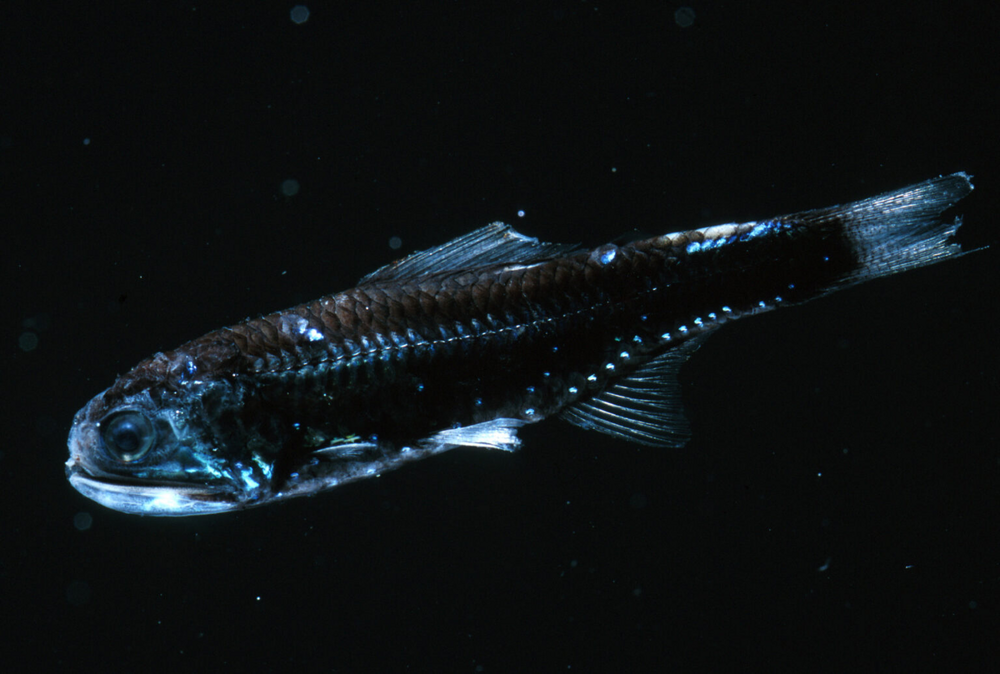
As you understand, myctophids were called “glowing anchovies” for a reason.
Level 4: Bathyal Zone
What's under the anchovies? And there is the bathyal zone - 3 kilometers of eternal darkness. Unlike the mesopelagic zone, conditions here are incredibly stable. Researchers suggest that they have not changed one iota over the past 8 thousand years. Our knowledge about this region is fragmented, because it is extremely difficult to explore. But it’s also very difficult to live here. 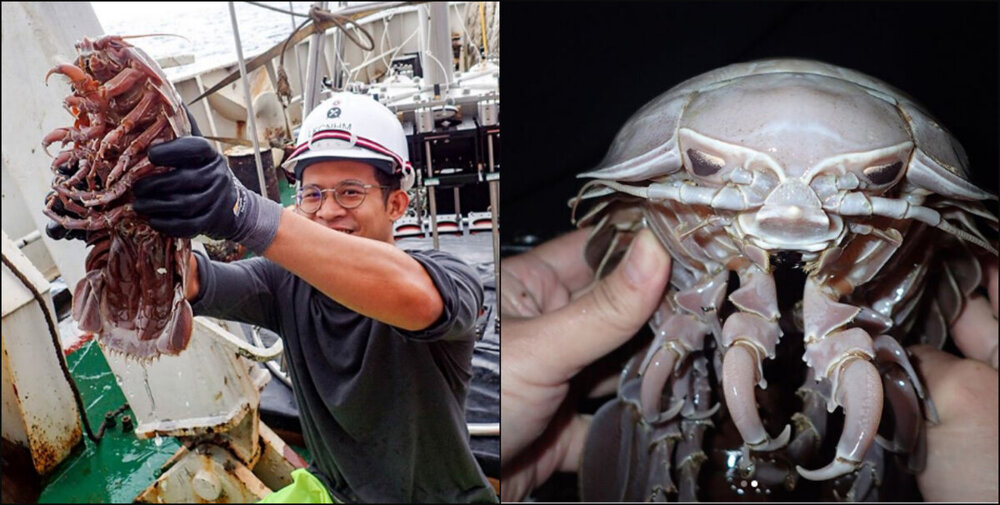
ExactlyThe bathyal zone is home to giant isopods - creepy crayfish that look like terrestrial woodlice. Which is not surprising, because wood lice are also crayfish.
Yes, sharks, squid, octopuses, anglerfish and deep-sea eels live here, but we can only roughly imagine their numbers and composition. Most of the local inhabitants are colorless, their skin is transparent, and their movements are slow. This level gets even fewer resources, so the value of each calorie increases many times over. 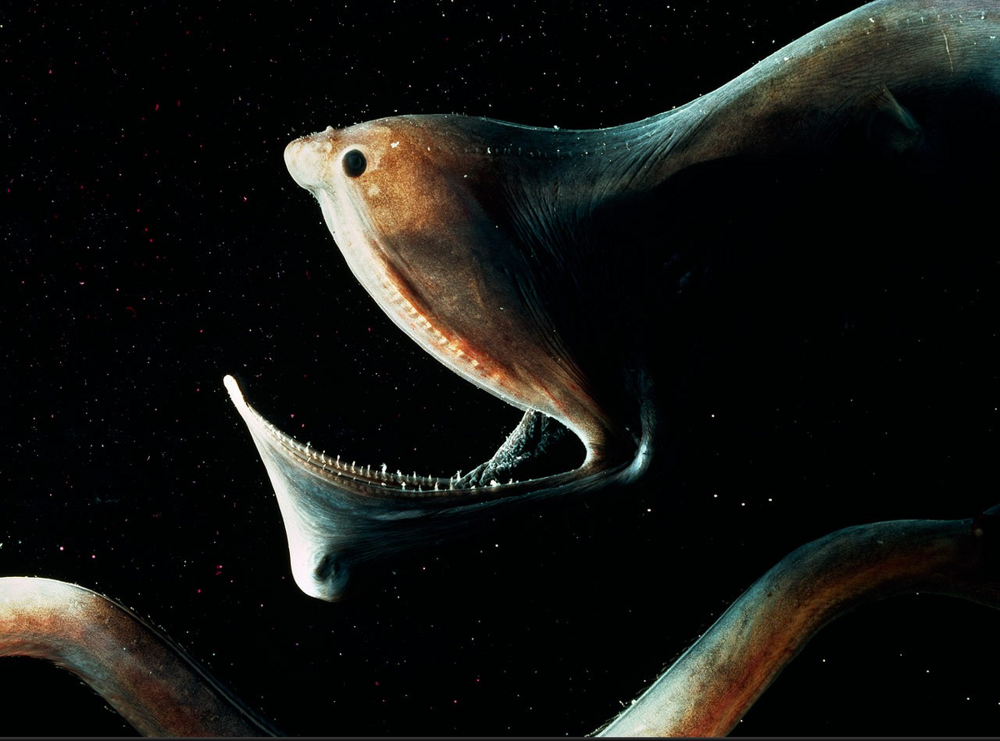
The pelican-shaped largemouth is a relative of the eel from the bathyal zone. Capable of rising much closer to the surface, into the upper part of the twilight zone.
Level 5: Abyssal Zone
But we still haven't reached the bottom. Welcome to the abyssal zone, an oceanic desert. There's really almost nothing here. Yes, we know even less about the abyssal, but even our scant information is enough to understand that there is nothing special to do here. There is little organic matter in the water; it is all compressed into deep-sea snow and quickly falls to the bottom, forming a kind of “desert of dust.” There is also not enough oxygen - its sources are too far away. But there is an abundance of organic and inorganic salts. 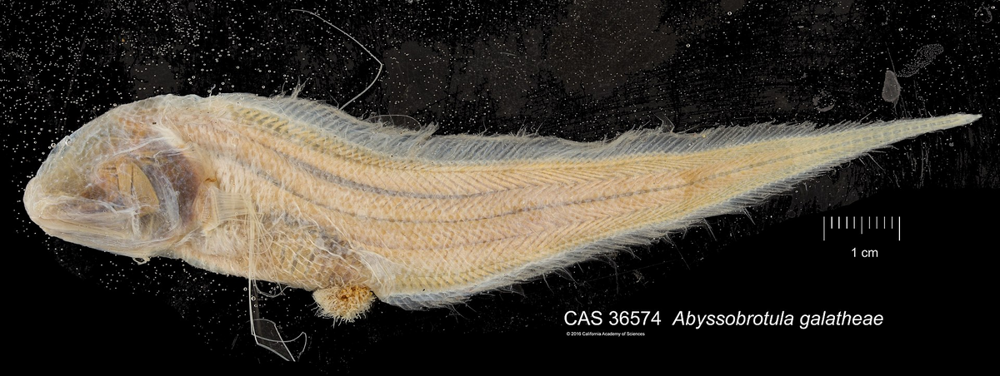
This fish was discovered at a depth of 8370 meters. To date, no fish have been found at great depths. 
These strange ghostly fish were also spotted there. They are called sea slugs.
Level 6: Abyssal Bottom
On the abyssal plains, at the very bottom, the situation is somewhat better. At first glance, there is nothing here, but on a layer of repeatedly digested organic matter, an ecosystem has gathered, including up to 1,500 species of invertebrates. Crustaceans, worms, creepy sea spiders and even monoplacophorans are relatives of snails, which were thought to have gone extinct 300 million years ago. And above all of them hover eels and other few fish that can survive at such depths. 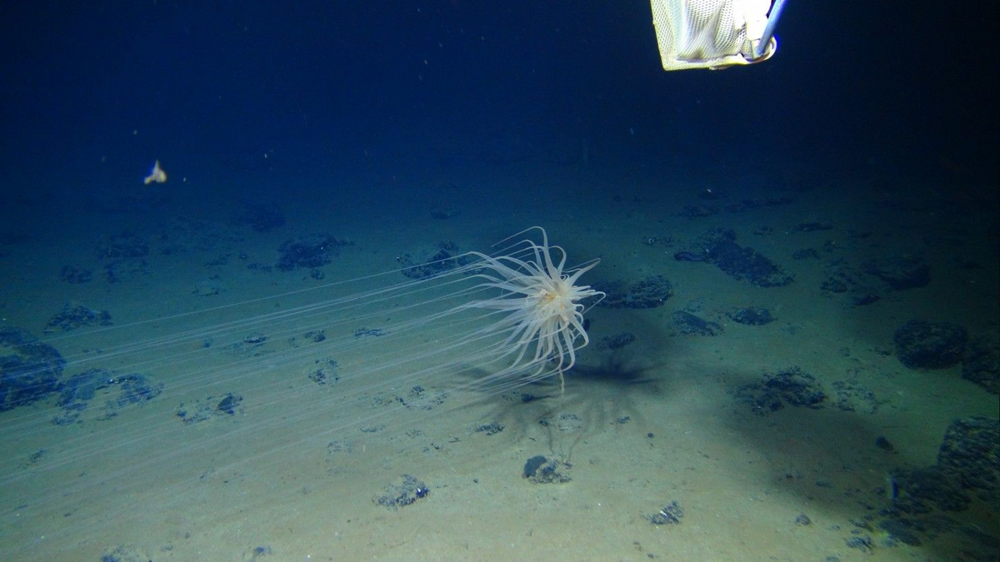
This is one of the cnidarians. It looks like a jellyfish. In fact, no one knows exactly what it is.
However, in this bleak area there are real oases of life: geothermal springs, dead whales and simply places where whimsical sea currents carry especially a lot of organic matter from the surface. In some of these regions there are so many animals that they lie in layers on top of each other! But if we move a hundred or two meters away from the point of activity, we see the same desert with boring microscopic worms. 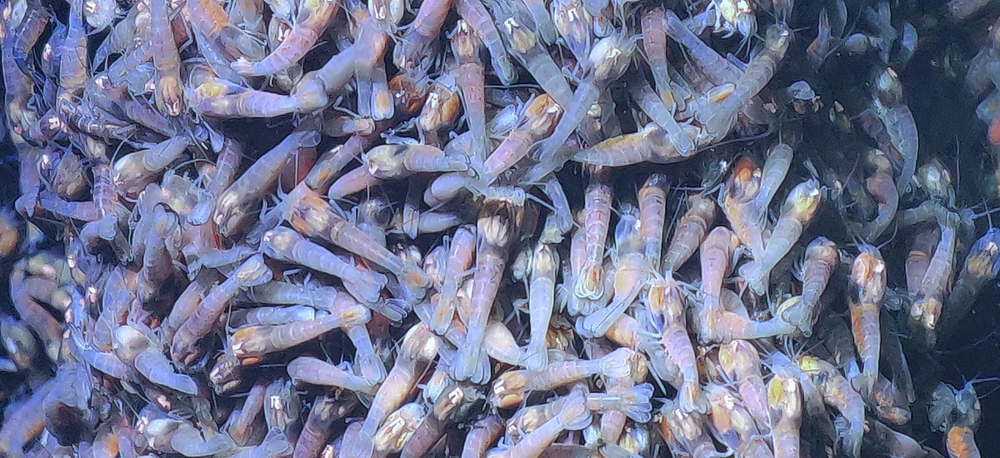
Dense accumulation of shrimp near a geothermal spring. If they get a little closer, they will be boiled in super-hot water. If they move further away, they will freeze.
So, that's all, but let's not forget that deep sea exploration is very rare in our world. This is extremely expensive and difficult. Therefore, it is not yet possible to really know what is happening in the dark depths of the ocean.




